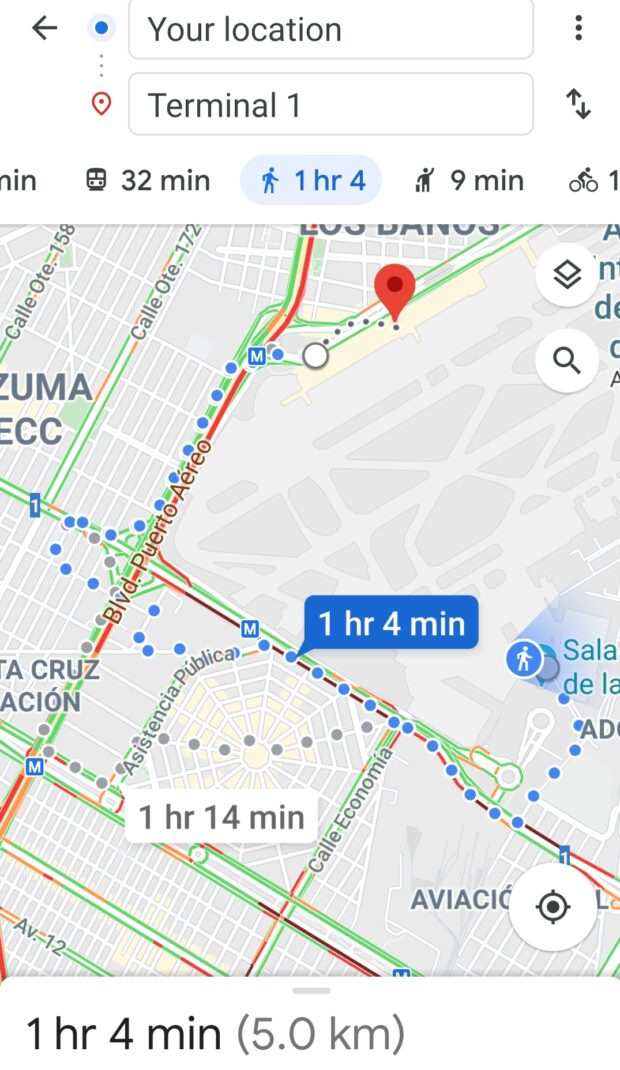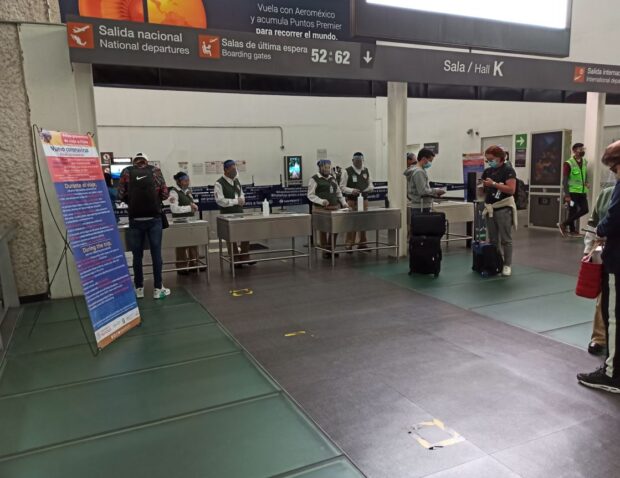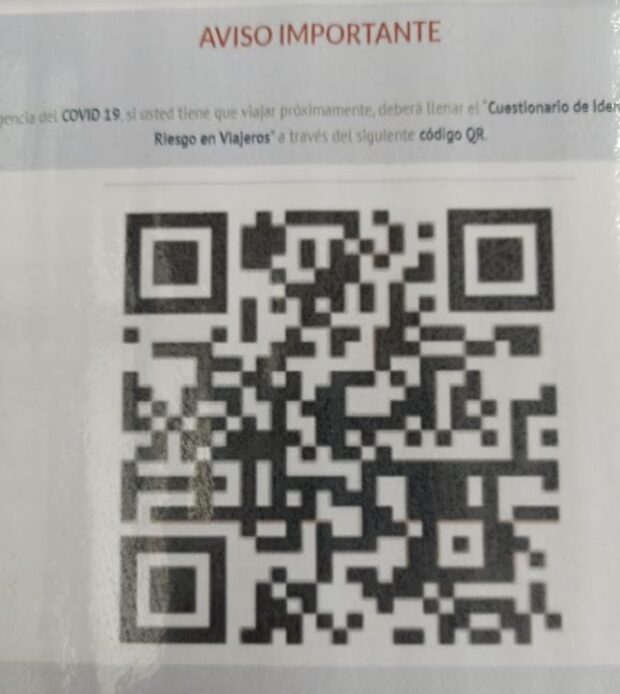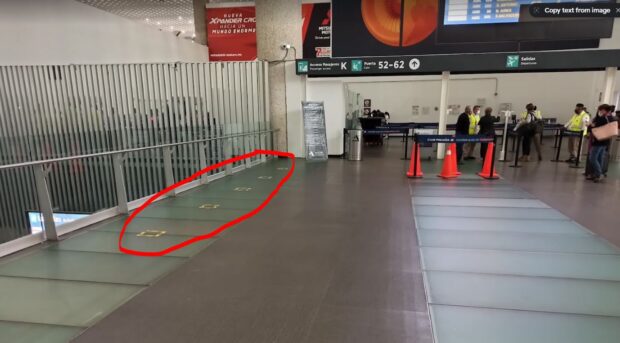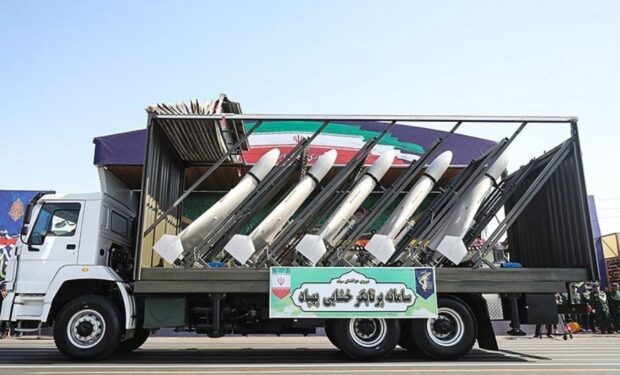Mexico’s coronavirus screening disaster!
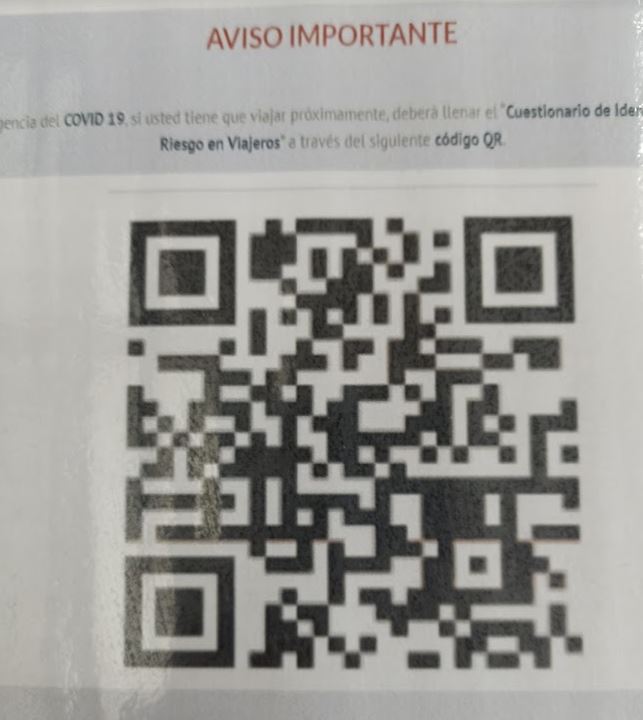
As I wrote before, we need to “forgive them, they know not what they do.” I was referring to global governments pretending to know what they are doing in respect to the coronavirus, one that will fade into yawning insignificance given time.
Just like flu season, it will get a mention on the TV each year, with a reminder to get your flu and coronavirus shots as it’s good for the drug companies. Clearly they don’t make enough money and they can’t be sued for possible serious side effects!
A month ago, I wrote that you should not go to resorts in Mexico, not because you won’t have a good time, but because of the potential travel hazards.
I wrote that, when it was time to return home you had a significant risk, that if you tested with a high temperature at the airport you had serious problems.
If you go to Mexico, you’ll be temperature tested nearly everywhere, and if high at the airport you’ll miss your plane, lose you fare, not be allowed back into the resort and have no place to stay except the hospital. No medical insurance… bigger problems.
Watch this video from minute 3:30 to 4:15.
You’ll also find similar screening at Mexican airports. Here’s my story from Mexico City…
I recently made a business trip to Mexico and returned to the United States recently. It was a near disaster, not because of health issues, but because of the Mexican airport coronavirus screening process.
I experienced a significant problem with (what passes for) the Mexico coronavirus screening process where I nearly missed my flight back to the United States because of a computer algorithm problem! I suspect lazy and sloppy programming. What a surprise!
Let me explain…
I flew into the Mexico City airport from another city in Mexico to Terminal 1 and took the train to Terminal 2, international. Mexico City has two terminals, far apart. Take the free train, or pay 15 pesos for the shuttle bus. Before leaving on the flight to Mexico City, I was screened using the same system to find my travel and coronavirus exposure history, if any.
I used my phone to scan a QR code at the first airport screening area before reaching the gate and then answered questions about my travel over the last 14 days, plus did I have any symptoms. I did not. I also had my temperature checked four times. Not a problem.
When I attempted to get through the coronavirus checkpoint questionnaire in Mexico city to reach my gate, the problems began!
Before reaching your international gate in Terminal 2, as well as all of the other terminal entry points, you must go to one of four tables with a QR code sign and a stack of paper, with two people at each table. They asked each traveler if they had internet on their phones and if so, had them scan the code in the photo to reach the screening website.
If not, they gave a person a piece of paper with the same questions. They try not to hand out paper, as that is the weak link, among many, with what passes for their system.
Note that the address reached through the QR code, http://afac.hostingerapp.com/, isn’t even a secure https:// website (open to hacking) and was actually a commercial site, not even one of the official Mexican government websites!
There is an “amateurs at work” message in just the website address. You can review the form by clicking this link.
If you click the link, you’ll see an electronic form that when completed will generate a code. In my instance, I suspect that as my multiple city dates were probably slightly different from the same electronic form completed for the prior flight, and that I used the same email address it flagged me as a coronavirus risk!
The QR code takes the person to this site –
And when the form is completed it generates a code on your phone screen. You show the “screener” your phone and proceed to your gate after baggage screening and the poorly marked exit immigration control. No exit papers, no getting on plane!
Make sure you get your exit immigration papers stamped, after your baggage is screened or, as I wrote above, you won’t be allowed on your plane –
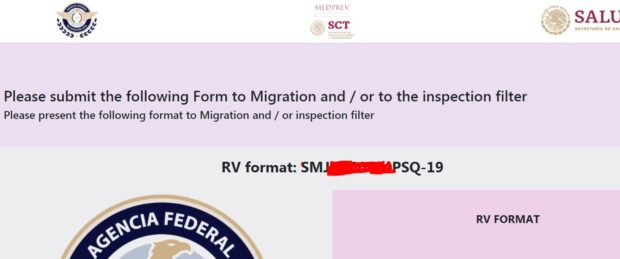
In my instance, the code had two letters after the dash, and not numbers. That was the problem. Immediately, they refused access to the terminal and asked me to stand in an area reserved for additional screening. Each person standing on the yellow square.
As I didn’t want to miss my plane, after five minutes, I started complaining and was told that medics were on the way! Sometime later that day! Naturally, medics weren’t waiting for customers in the area as the government doesn’t understand that people were catching planes and time was important. Too complicated.
They would not have cared if I missed my plane, nor would the airline that would have kept my money. Too bad.
Naturally they didn’t arrive within 15 minutes so I walked over to the desk, got a paper version of the form and used the same information as I completed electronically.
I waived it to the same screener who blocked me before and I passed through without a problem, boarded my airplane after another temperature check and finished my trip!
They didn’t even bother to collect the paper I had completed; I still have it but I had met whatever standards they have… if any.
So here is the takeaway –
Their attempt at screening is to create the impression that they have a system that works. I don’t think it does, but the illusion is all that is important. As I wrote above – “forgive them, they know not what they do.”
If flying once, use the electronic or paper form and preferably the paper.
If flying more than once, ONLY use the paper forms as they won’t even input the data, if ever and you’ll be home long before they do.
If you insist on using the electronic forms, give one of your different email addresses on each, as I think that is their unique cross-reference point.
And on subsequent trips, it appears that you don’t even have to complete anything… just walk through and ignore the QR code table.
Now you know.
Or maybe… here’s some more information… I found that the system has changed! On three occasions recently, they no longer give out pieces of paper for completion. It’s the QRcode, or nothing.
By nothing, I mean that if you don’t have a scanner or your phone doesn’t have an internet connection they will just escort you past the screener without completing anything, so they won’t have your information.
It’s too much trouble for them to do data entry work; they want the public to do their data entry work for them by you scanning the QR code and you doing the online form completion.

